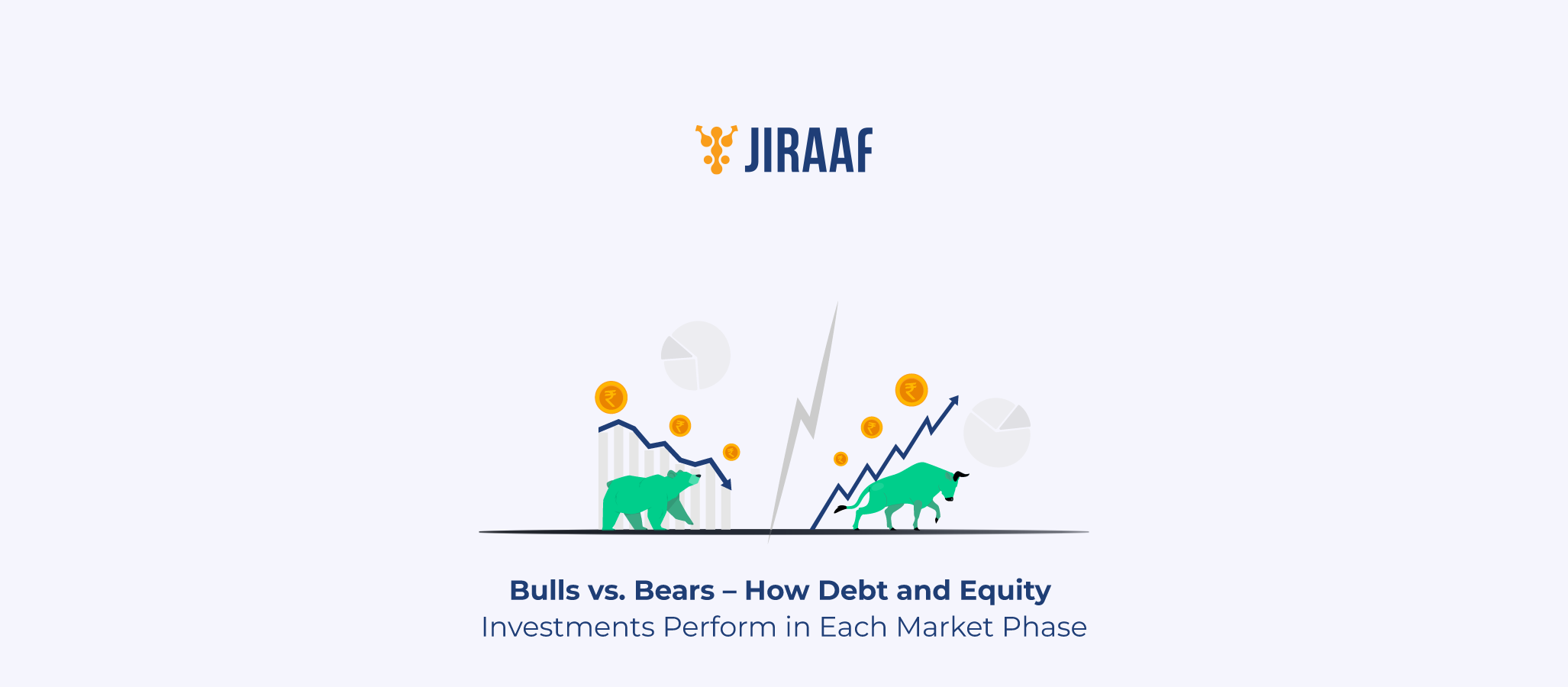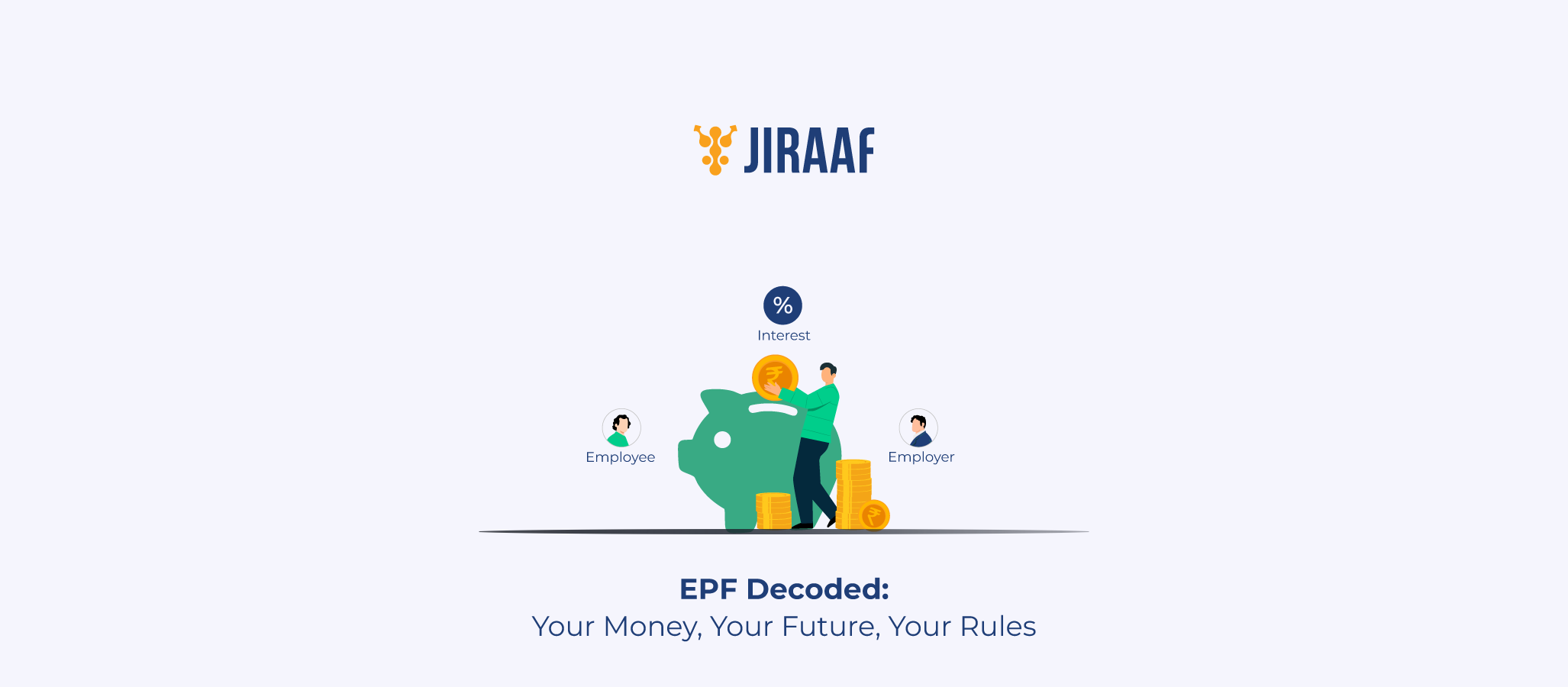The battle between bulls and bears is as old as Dalal Street. While you swing from one to the other, your portfolio can hint at the market’s current phase. If your portfolio is a sea of red, making you want to scream in anguish, it is probably a bear market. If, on the other hand, opening your portfolio brings a smile to your face with all the greens, the market is in a bull phase.
Bulls and bears are two permanent residents of the markets, representing two sides of the same coin. Both bulls and bears will test your mettle as an investor, forcing you to make emotional decisions.
Fear induced by market volatility and sharp corrections can lead to panic selling of stocks with good fundamentals, while the fear of missing out can lead to panic buying and overextending your portfolio. Emotional decisions can impact short-term cash flows and hamper long-term asset allocation.
While the media reports around raging bulls and prowling bears do the rounds when the equity markets witness heightened volatility, as an investor, you must understand the makings of the market volatility. Understanding the reasons behind a bear or a bull market will help you make informed investment decisions and optimize returns.
This blog post will explain the probable reasons for market volatility and its impact on two of the most popular asset classes in India: Debt and Equity. Let’s get started!
What is a Bull and a Bear Market?
Markets move every day, and volatility is synonymous with the equity market. However, a market can be classified as a bull or a bear market when the quantum of the movement exceeds 20% from the current levels.
A bull market would mean soaring equity prices and firm investor conviction in the country’s future prospects. The idea of future profits attracts new investors, turning the volatility into an upward cycle. A bull market is a prolonged cycle because investors are sceptical; thus, building confidence takes time.
A bear market, on the other hand, is denoted by an increase in selling pressure and a decrease in investor confidence. This tipping of the demand-supply equation leads to a sharp drawdown. A bear market will likely be shorter than a bull market as investors flock in to sell to liquidate their holdings, causing the market to correct sharply.
The bull vs. bear market is an ongoing battle. The change from bull to bear market or vice versa can be triggered by changes in the economic condition, events creating a structural impact on the valuation of securities, investor confidence, changes in inflation and interest rates, etc.
Your equity investments will bear the brunt of the market phase, so investment experts advise portfolio diversification by adding fixed-income assets such as bonds. But this doesn’t mean bond markets are immune to economic changes. Let’s see how the impact of economic changes on the bond market differs from the equity market.
The Impact of Economic Changes on the Bond Market
While the bond market experiences ups and downs influenced by the economy’s state, it is much more stable than the equity markets.
Bond prices are impacted by economic changes such as inflation, an increase or decrease in interest rates, or structural changes that alter the credit environment in the economy.
Bond price reflects the value of the income it provides through the regular payment of coupon-based interest. Bond yield is the return an investor expects if the bond is held till maturity. Bond prices move in the opposite direction to their yield.
For instance, yields would fall if the interest rate is in a downward cycle and set to come down. This also implies that bond prices of previously issued bonds with higher coupons would increase and trade at a premium in the secondary market.
While the bond prices and yield fluctuate, the coupon rate will remain constant for fixed-rate bonds. If you have invested in an 11% fixed coupon rate bond with a coupon payable once a year, a tenure of 5 years, and a face value of Rs. 1000, the interest received is known beforehand. You will receive Rs. 110 at the end of the year. This makes income predictable and thus easy to plan.
When it comes to the price of the said bond, it will trade at a premium, i.e., above Rs. 1000, as it is a high-coupon-rate bond. This is because the cost of borrowing comes down as the interest rates come down in the economy. The decreasing interest rates will spur demand for high-coupon-rate bonds as investors want to lock in higher rates.
Economic cycles impact both the debt and equity markets. Let’s understand the impact of market cycles on both markets.
How Economic Cycles Work?
Growth is the cure for all economic ailments. An economy builds a strong bull case with stable growth, low inflation, and manageable macroeconomic risks. Economists term such economies Goldilocks economies.
India is in its goldilocks growth phase with March’25 inflation well within the Reserve Bank of India (RBI) tolerance band at 3.34%. GDP growth is also forecasted at 6.5% despite tariff challenges and a tense geopolitical environment. The economy’s interest rates are also expected to decrease, with two rate cuts already announced and two more expected in FY25- 26.
A stable economy powered by the right mix of underlying factors, such as strong productivity, healthy margins leading to strong balance sheets, and a balance between demand and supply, would shift the market cycle towards a bull case. Stronger balance sheets and margins also translate to benign credit cycles for the debt market.
Investors prefer growth assets such as equities in a growing economy. Well-researched and thought-out equity investments lead to wealth creation during economic growth phases, as equity valuations are driven by forecasts of long-term growth and buoyancy in economic factors, leading to more optimistic projections.
Bonds in a bull market serve as instruments for liquidity management and capital preservation, helping you anchor your portfolio against potential volatility.
An economy doesn’t need to go into a negative growth phase for the equity markets to correct. One of the underlying growth factors sees dislocation, potentially translating to higher inflation or overheated valuations in the market.
For example, higher demand can lead to an increase in prices, shortage of skilled labour can lead to a reduction in productivity, or higher than expected capital inflows can lead to asset pricing bubbles.
What the Indian Equity markets saw in the past six to eight months can be classified as higher capital inflows driving up prices, taking the PE multiple to 1.5 times their long-term averages. Economic growth did not support the overheated valuations; the GDP growth slowed compared to expectations, leading to a market correction before the trade war started. The US tariffs led to further corrections as investors priced in the impact of the possibility of reduced exports.
The capital outflow led by foreign institutional investors (FIIs) and foreign portfolio investors (FPIs) caused the market to correct.
Asset Allocation in Market Cycles
Adverse external or internal triggers can turn a market correction phase into a bear market, which can lead to negative investor sentiment.
For example, the post-liberalisation bull market of 1991-92 saw a bearish market until ’94 following the balance of payments crisis and equity market overvaluations. The equity market could see faster capital outflows in a bear market, while the bond market becomes the most crucial avenue to continue the wealth creation journey.
Bonds can protect against volatility and provide reasonable yields in an uncertain market. A bear market would also lead to cooling off asset prices and inflation, often leading to further rate cuts, enhancing bond prices.
However, it is important to monitor credit cycles and events during a bear cycle. Sustained downtrends can precipitate insolvencies and negative credit events, creating risks in the bond markets.
While the market oscillates between bear and bull cycles, it is important to allocate portfolios in a manner that mitigates volatility while managing wealth growth. A healthy balance between equity and bonds is critical to maintaining this balance.
Current Market Reading
Most global markets experienced a bull phase following considerable capital infusion during the pandemic.
New technologies such as artificial intelligence (AI), semiconductors, and high pent-up demand led to strong growth in 2022-2024; there are signs of growth slowing globally.
Additionally, the global tariff wars have increased the uncertainty to levels unseen in recent years. While it is too early to determine whether the market is entering a full bear cycle, it is essential to reallocate towards assets that offer protection.
Given that the RBI has shifted policy stance to accommodative, further rate cuts will likely follow in 2025. Indian corporate balance sheets remain healthy, with leverage ratios close to decade lows and growth prospects steady. Amidst the volatility, Indian corporate bonds could be the best-performing asset class over the next three to three years.
Discover fixed income investments with Jiraaf, a SEBI registered online bonds platform that educates and brings access to a wide array of bonds. Sign up today to explore diversified fixed income investment opportunities to support your goal-based wealth creation journey. Start investing!



